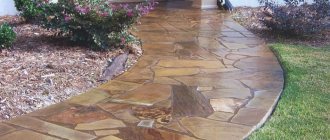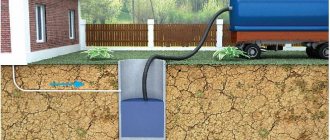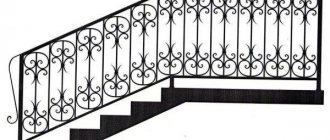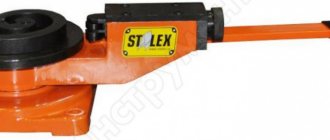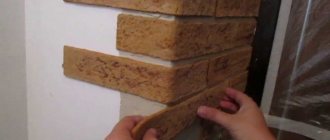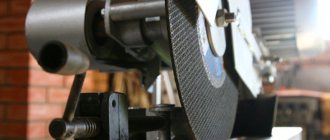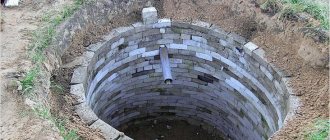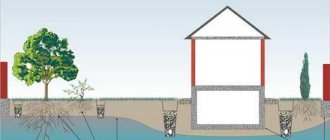Today we will talk about decorative printing on concrete. The construction industry is constantly evolving, which contributes to the emergence on the market of a wide variety of innovations and original methods of using familiar materials. Seemingly ordinary concrete also falls into this category.
Concrete structures can look like real stone pavers or slate slabs, all thanks to the use of metal or polyurethane stamps.
This type of concrete is called stamped concrete because it can be used to create imitation of different materials. For example, such as:
• ground covered with cracks; • brick; • boards; • skins of various animals; • paving stones; • weathered stone.
A decorative pattern is applied to the concrete surface using special stamps - that’s the whole technology.
The pictures are not limited to the standard set, they are quite varied. Various animals, birds, leaf patterns and even dinosaur tracks can be depicted. Imitation of this kind is in demand in the design of exhibition halls, terraces, garden paths, areas near the pool, and sidewalks.
Variety of stamps
The method of printing decorative concrete involves a large selection of different shapes. The stamp of the first ones are heavy forms with handles; they perfectly imitate patterns of brick and stone. But to copy more complex textures, modern polyurethane stamps are used. They cope better with such complexity and are more profitable to operate. Polyurethane stamps can be poured over samples whose texture needs to be imitated. The result is stamps with natural textures.
Ready-made forms can be purchased at building materials stores. You should always pay attention to their rigidity. Choose stiffer and denser stamps, as they make it much easier to create visible designs on products.
Hardener application method
The hardener is applied only to fresh concrete. It increases strength and more reliably strengthens the structure, and also colors its surface. The hardener mixture is a powder, and it consists of:
• coloring pigments; • quartz sand; • ground granite particles; • binder fillers.
The mixture, filling the pores of concrete, impregnates them, as it is dispersible. The base gains density and becomes strong.
After applying the first layer, it is left to soak in for ten minutes. This also gives the surface time to smooth out. The dye must be rubbed into the base using a magnesium trowel; the corners must also be treated. This is done with appropriate trowels. Then the second layer is applied. It is required as it promotes uniform coloring and compaction of the surface. Before the second layer is applied, it is leveled with a steel trowel.
Release agent: application methods
The release component prevents the concrete from sticking to the forms during printing and is an important component in the production of decorative concrete.
Its use makes it possible to additionally color the surface and add softer shades to its color.
Release agents can be liquid or powder. But in practice, as a rule, powder is used. The powder is applied with a wide brush. It is immersed in a bucket, and then waved with a hand so as to spray it over the entire plane. After spraying the corners, you need to go over the textured laces.
Types of decorative building materials
Decorative concrete is available in several types, each of which has a different composition and purpose.
- Color. There are more than two dozen pigments that are used in the manufacture of printed materials. The composition of the pigments is designed in such a way that the color is preserved for a long time even under negative external influences. Often, specialists use metal oxides or salts to paint decorative concrete surfaces. For example, chromium oxide is added to give the solution a green tint.
- Imitation stone. The latest processing technologies allow manufacturers to create mixtures that look like real stone. Upon inspection, decorative concrete is almost impossible to distinguish from natural stone.
- Decorative concrete with a relief structure. This effect can be achieved by adding special aggregates to the concrete composition. Then builders remove the surface layer with tools or mortars. Decorative finishing is done using crushed marble and other materials. The decorative design of surfaces made using gray and red colors looks especially impressive.
Return to contents
Punching
If you make stamped concrete yourself, now is the stage when you can start stamping directly. Check whether the concrete is flexible enough to continue working with it. After all, if the material is too dense, the pattern will not be able to be imprinted on it. And such a plane will not support workers.
READ ALSO: How to build a concrete pool with your own hands
Press your finger into the concrete at different points - this will allow you to set the degree of density. If the depth of the prints does not exceed 6 mm, you can start stamping. To begin with, place stamps over the entire surface of the concrete, then you need to step on them for the texture to be imprinted. Sometimes manual compaction may be necessary. Next you need to let the surface harden. This process takes from 12 to 24 hours.
About the types of architectural concrete
Since explanations regarding the terminology regarding art concrete are very contradictory on the Internet, many people cannot really understand what it is. So first let's give a brief explanation.
There are three main areas of application for architectural concrete. This:
Production of monolithic facade structures, including those with a three-dimensional front surface.
A building with an unusual facade made of architectural concrete
Application for casting artistic objects (sculptures, bas-reliefs, elements of facade decor and stairs), small architectural forms, monolithic surfaces with relief.
Outdoor flowerpot
Art concrete: wood for the garden terrace
The area in front of the house made of printed concrete
Finishing the external and internal surfaces of existing building structures in order to give them a finished appearance. When using it, as in the first two cases, the shape obtained with the help of formwork is not used, but only the texture is important. That is, the third type of art concrete is simply decorative plaster.
Art concrete in the interior
The predominance of certain properties of polymer concrete depends on the specific set of ingredients in its composition. As you may have guessed, it was the third version of concrete that received the prefix “art” (art). Here, too, there are several technologies that were patented in the USA half a century ago, but they began to be used here not so long ago.
One of them is the so-called printed (stamped) concrete, which, being applied to the base, is processed in a still plastic form with a tool for applying relief. There is also sprayed decorative concrete, and there is colored concrete, with which you can very reliably imitate stone or brick masonry.
It's hard to guess that this design is made of printed concrete
It is enough to have a plastic or rubber matrix (stamp) on hand, with the help of which the desired relief is applied to the surface of the uncured plaster. This can also be an imitation of wood pattern. For maximum realism, the formatted surface is perfected using decorative paints.
Stamp for forming the relief of masonry
Composition of art concrete
Since the tasks assigned to concrete are different, their composition will not be the same. It is mainly varied with the help of additives that regulate physical properties (plasticity, hardening rate, hydrophobicity) and decorativeness. The polymer component, as well as some types of plasticizers and mineral additives, give the mixture excellent plasticity.
To create such beauty, the plasticity of the material is very important.
There is no coarse aggregate in decorative concrete; ground rocks (for example, volcanic tuff), limestone and, of course, quartz sand are used to strengthen the compositions. Setting and hardening times are regulated by special hardeners; if necessary, air-entraining, compacting or water-repellent additives are introduced into the composition.
But to achieve the desired texture, the following ingredients can be added to the art concrete:
- colored glass;
- mica;
- ceramic chips;
- dolomite, basalt, granite, marble crushed into flour.
Decorative tiles made of colored concrete
This amount of additives is typical only for concrete used to create decorative coatings. They reduce the strength of the stone, so mixtures intended for structural use are made traditionally, with longer hardening times.
If the supporting structure must be colored, it is painted superficially, or the concrete is made white by adding the bleaching agent titanium dioxide, which also has a beneficial effect on cement, increasing its strength. That is why the elements of facade architecture are overwhelmingly white.
The splendor of façade architecture in Art Nouveau style
Recipe and additional technology features
You definitely need to carefully study the method of making printed concrete before starting work. If you have done this, you should know that this technology in some cases involves the use of a concrete mixer. Sometimes fibers are added to cement and sand. One part of cement is 1/3 part of sand. 1 kg of plasticizer is used per cubic meter of concrete.
1. The mixture must be laid slightly above the level of the formwork so that the plane can be easily leveled. 2. Two kilograms of paint are used per 1 square. m of surface. 3. Stamps can be laid five hours after pouring the mixture. 4. Immediately after removing the molds, you need to mark the seams with a marker chisel.
The concrete will become strong on the fourth day. During this time, the remnants of the separating component are removed from it. The concrete base is treated after five days with a sealant varnish.
Surface washing
After the stamps have been removed from the concrete and it has hardened, you can do the washing. Next comes cleaning with hydrochloric acid. It will help to reveal a “combination” of several color tones, opens the pores in the concrete, and this allows the surface to better interact in combination with the sealant. The sealant is applied the day after pouring. This composition is used to protect the surface from rapid abrasion and various damage. The surface looks like new for a long time. It has a bright color and is easy to care for.
Stamped concrete: product characteristics and scope of application
The composite building material presented on the sales market is a high-tech novelty, a sought-after product among people seeking to decorate their outbuildings, gardens, and façade sidewalks in an original way.
Stamping covers various areas of application in the field of decorating external and internal finishing works: surfaces of sidewalks, asphalt, walls, ceilings, accurately simulating various types of wood, brick, wood, stucco. Stamping allows you to advantageously modify the decor and design of spaces. Due to its functionality, durability, and uniqueness, it has no analogue.
Stamped concrete is widely used in private, industrial and commercial construction:
Table of characteristics of stamped concrete.
- shopping areas;
- garden paths;
- sidewalks;
- parking lots;
- city squares;
- construction of cottages;
- open cafes;
- yards and many other areas.
The product has a variety of shades (more than 10 colors), high technical characteristics, and the rich beauty of natural stone, which allows its widespread use in decorating bay windows, arches, openings, niches of any color scheme and texture.
The main feature of the building product is:
- strength;
- frost resistance;
- wear resistance;
- durability;
- shock resistance;
- resistance to corrosion and rodents;
- does not collect dust;
- It does not require special care;
- does not retain water due to the gaps between the tiles;
- not susceptible to temperature influences.
All these advantages significantly distinguish it from conventional asphalt concrete pavements due to the composition and the inclusion of special additives to obtain the desired properties.
Another significant feature of the printed and stamped product is its perfect resistance to aggressive acid-base agents, which is extremely important in crowded areas and chemical plants.
